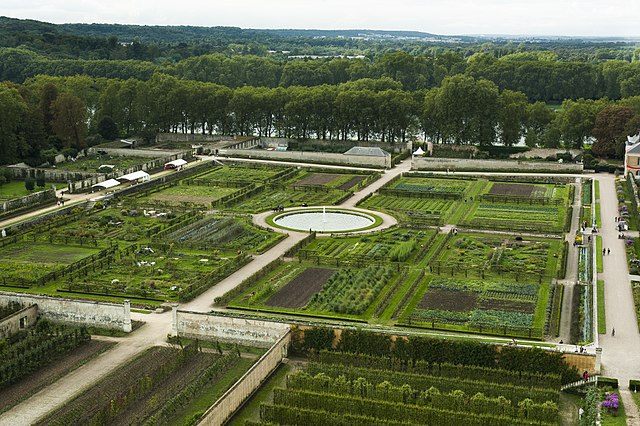The early history of gardening is largely entangled with the history of agriculture, with gardens that were mainly ornamental generally the preserve of the elite until quite recent times. Smaller gardens generally had being a kitchen garden as their first priority, as is still often the case.
The Renaissance style gardens at Chateau Villandry.
The Mughal and English-style garden leading to the Taj Mahal.
Sigiriya in Sri Lanka is one of the oldest landscape gardens in the world.
King Bimbisara of Magadha visits the Bamboo Garden (Venuvana) in Rajagriha; artwork from Sanchi.
The traditional kitchen garden, vegetable garden, also known as a potager or in Scotland a kailyaird, is a space separate from the rest of the residential garden – the ornamental plants and lawn areas. It is used for growing edible plants and often some medicinal plants, especially historically. The plants are grown for domestic use; though some seasonal surpluses are given away or sold, a commercial operation growing a variety of vegetables is more commonly termed a market garden. The kitchen garden is different not only in its history, but also its functional design. It differs from an allotment in that a kitchen garden is on private land attached or very close to the dwelling. It is regarded as essential that the kitchen garden could be quickly accessed by the cook.
Typical potager (French intensive gardening) with its traditional scarecrow in the French countryside
Walled 17th-century kitchen garden at Ham House near London, with orangery in the distance.
An herbal garden at Beernem, Belgium
Part of the potager du roi at Versailles, with steps for mounting the wall at bottom right.








